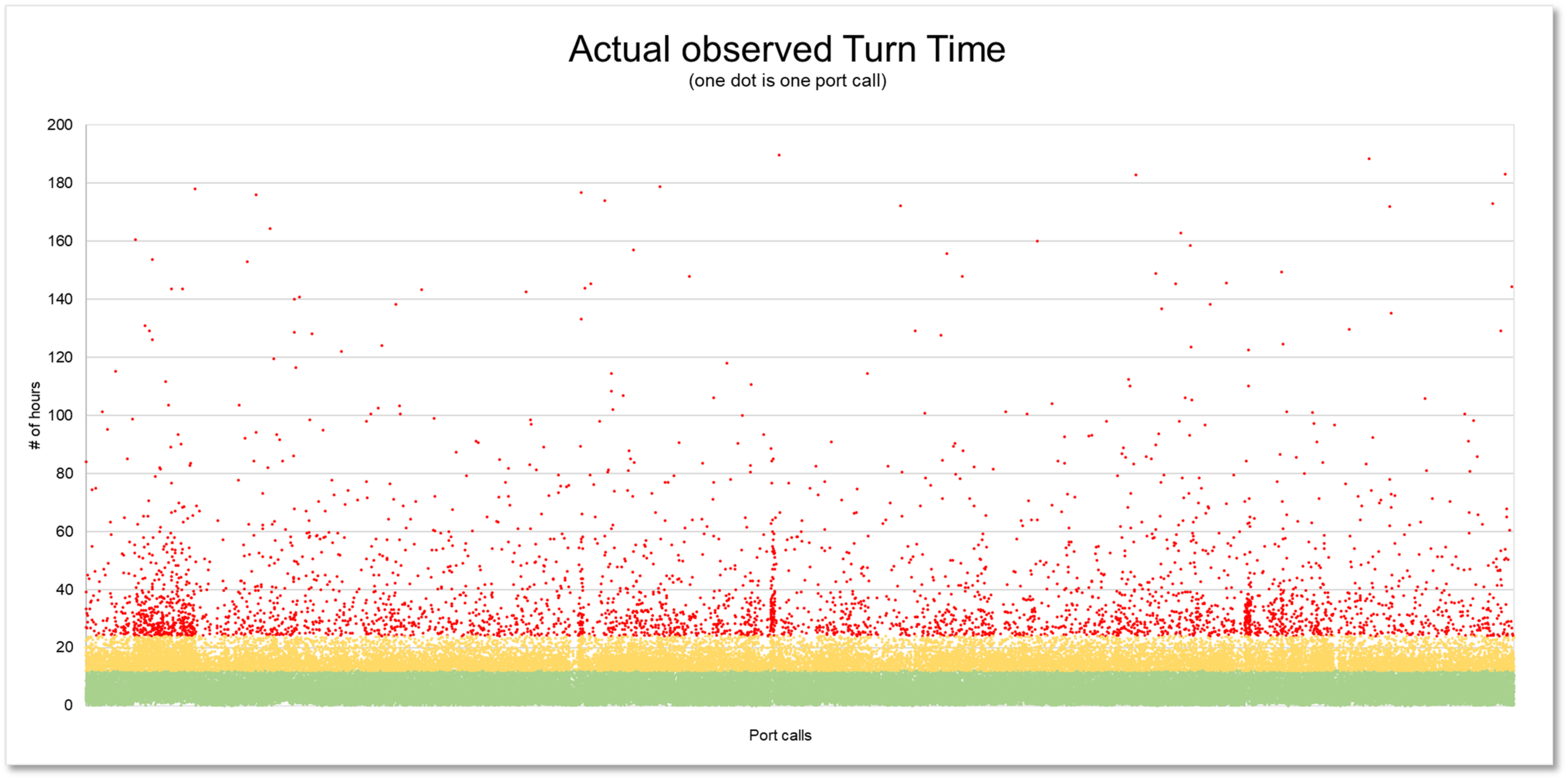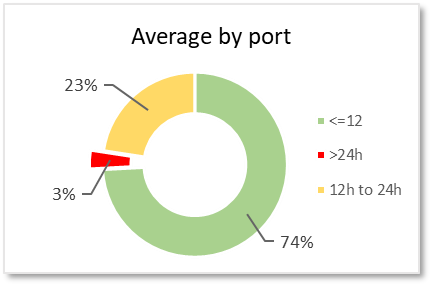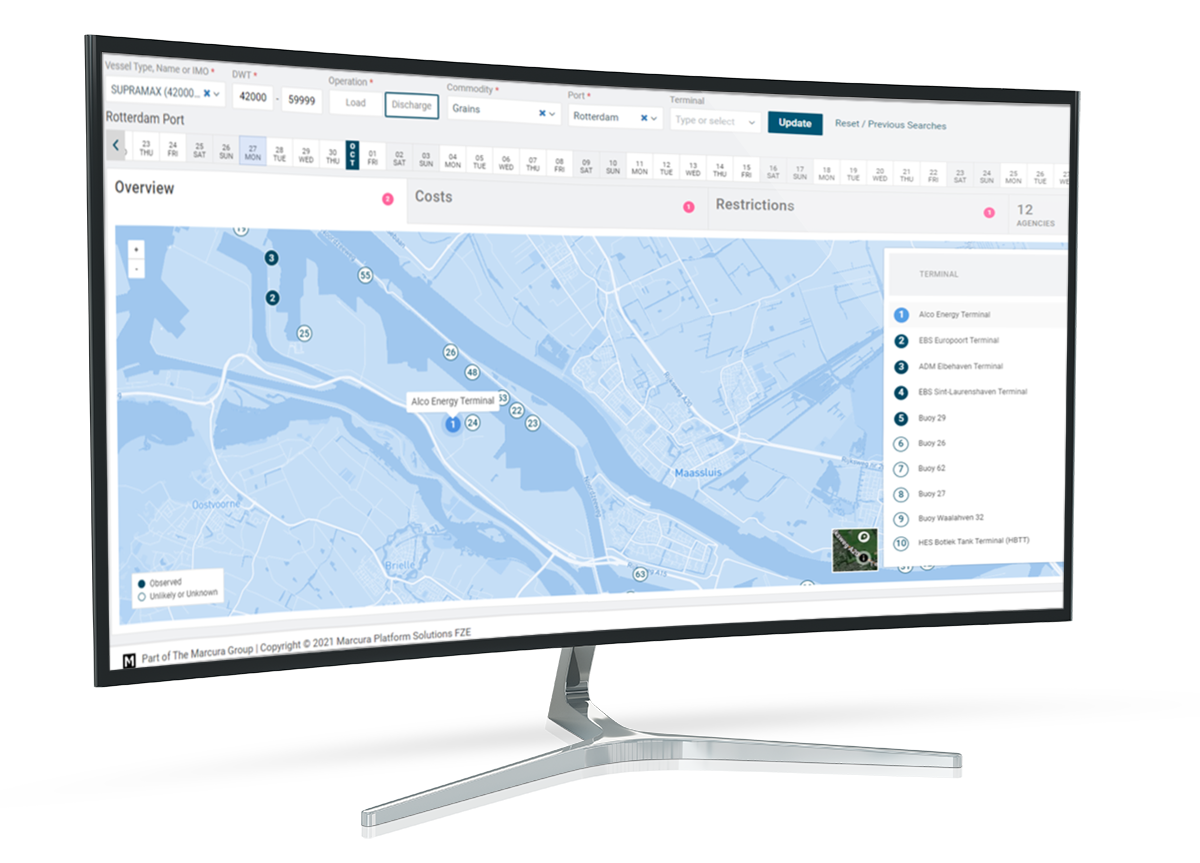Turn time: Where is 12 hours not enough?
The dry bulk industry practice is to allocate 12 hours as “turn time” when calculating voyage results.
But is that always enough?

Turn time is a commonly used term in the industry, but often the interpretation of it differs. The actual definition is related to laytime and refers to a clause within charterparties.
“….to provide for there to be a period of time before laytime commences, either from when the vessel is actually ready to load, or discharge having reached the specified destination or from when the Notice of Readiness (NOR) is tendered.”
The dry industry practice is to allow 12 hours in charterparties, which can be seen as a grace period for the cargo owner to not pay laytime.
Consequently, there is also a practice for chartering teams to apply those same 12 hours in their Voyage Management Systems, assuming this will be a sufficient buffer to cover for time lost on both arrival and departure, before and after the laytime counting period.

Analysis – the good news, the bad news
The good news is that 75% of the 100,000+ port calls we have monitored over 3 years do fall within the standard 12 hours – suggesting that 12 hours is not a wrong rule of thumb.
But it also means that 25% go beyond the standard 12 hours and so allocating 12 hours for the voyage budget will not be enough in these cases.
On further investigation, our study shows that the majority of the delays occur at departure, after completion of operations, until vacating berth.
Typical delays we have observed include:
- Tide and/or daylight delays
- Waiting for pilot
- Waiting for documents to be provided
All of which are aspects that might be possible to optimise with proper data, knowledge and care applied.
Analysis by port
Surely all ports are different, and when looking at the averages for 1,500 ports, we found that for 26% of ports the average lost time on arrival & departure in that particular port exceeds 12 hours.
And for 3% of the ports, the average even exceeds 24 hours, so blindly applying 12 hour turn time to your calculations in those ports would very likely mean unexpected lost time and a negative impact on your voyage P&L.
Data source: PortLog data and analysis, based on 100k+ port calls


Understanding the patterns to improve P&L
These patterns, along with the understanding that in some ports a delayed stay is not only causing additional vessel costs, but may also drive additional port costs, should trigger any chartering or operational professional to understand deeper which are these ports, and what are the reasons for those delays.
Understanding these patterns and root causes deeper, is what our PortLog solution is designed to do.
Please get in touch to learn more.
Written by Kim Ahler, Digital Transformation Manager, PortLog, and based on the data and analysis produced by his team
Request a demo
Get in touch for a platform demo. We’ll also provide a confidential analysis of your estimates vs actuals.
Whether you are a Veson IMOS Platform customer or not, we’d love to speak with you.
Please fill out this form and our team will be in touch.